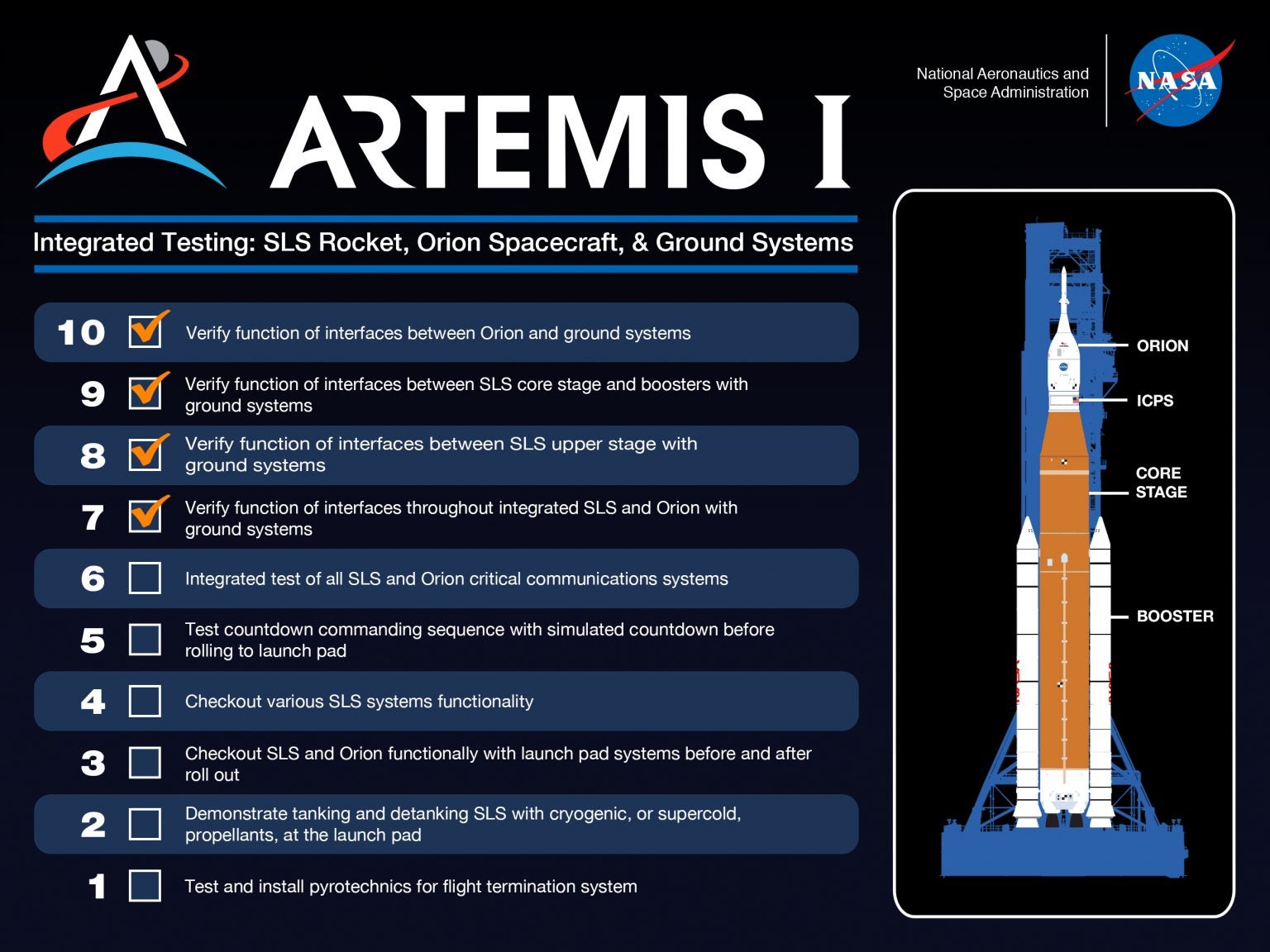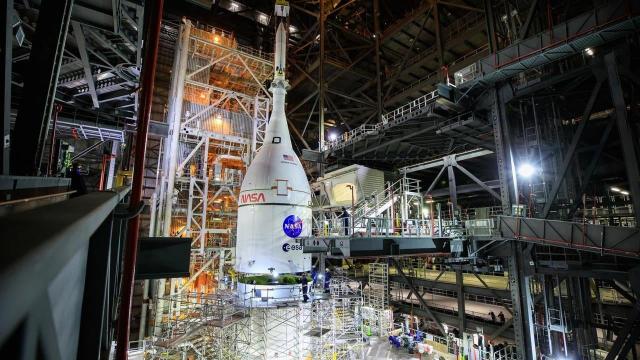A misbehaving engine computer means the inaugural launch of NASA’s Space Launch System, planned to be the most powerful rocket in the world, won’t happen in February 2022 as planned.
The fully stacked SLS, with the 74,000-pound (33.5 metric ton) Orion spacecraft mounted up top, is currently undergoing integrated testing inside the Vehicle Assembly Building at NASA’s Kennedy Space Centre in Florida. These tests are in anticipation of the yet-to-be-scheduled wet dress rehearsal, in which propellant will be added to the rocket’s fuel tanks. A successful wet dress rehearsal would in turn set the stage for an actual launch — the much-anticipated uncrewed Artemis 1 mission to the Moon and back.
Indeed, NASA is planning to use the 101.19 m-tall (101-metre) rocket for its upcoming Moon missions, but the recent testing glitch means we will have to wait a bit longer — but hopefully not much longer — to finally see this behemoth soar through the Florida skies. Once complete, SLS will become the world’s most powerful rocket, though that crown could swiftly be stolen by SpaceX’s fully stacked Starship, which is also scheduled to launch for the first time next year.

NASA, as it conducts the integrated testing, is making sure that Orion, the core stage, and the two booster rockets are properly communicating with ground systems. During a recent power test of the core stage, NASA engineers detected an issue with an RS-25 engine flight controller. Here’s how NASA described the problem:
The flight controller works as the “brain” for each RS-25 engine, communicating with the SLS rocket to provide precision control of the engine as well as internal health diagnostics. Each controller is equipped with two channels so that there is a back-up, should an issue arise with one of the channels during launch or ascent. In the recent testing, channel B of the controller on engine four failed to power up consistently.
The Aerojet Rocketdyne RS-25 engines are borrowed from the Space Shuttle program, but they’ve been modified to provide additional power. And where the Space Shuttle featured three of these engines, the SLS core stage has four. That the engine flight controller is misbehaving is surprising, given that it functioned normally during preliminary integrated testing and during the full duration hotfire test conducted in March 2021, according to NASA.
Engineers, upon detecting the problem, ran inspections and performed further troubleshooting, but ultimately decided to swap out the problematic engine controller. NASA says the rocket has “returned to full functionality,” but its engineers will continue to investigate the root cause of the issue. The space agency is now reviewing launch opportunities in March and April. If timelines disclosed by Artemis 1 mission manager Mike Sarafin in October remain valid, the launch windows would be in mid-March and mid-April.
Plenty of work remains, including further communications tests, countdown sequence testing, and final checkouts of SLS and Orion functionality. The wet dress rehearsal will signify a major milestone, after which time NASA will provide a firm launch date.
